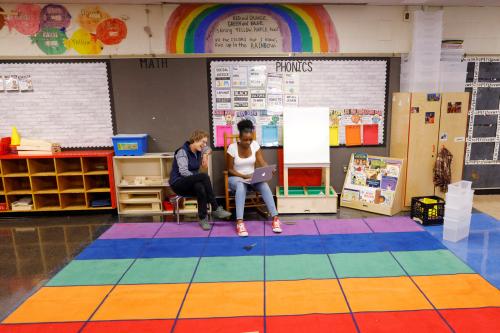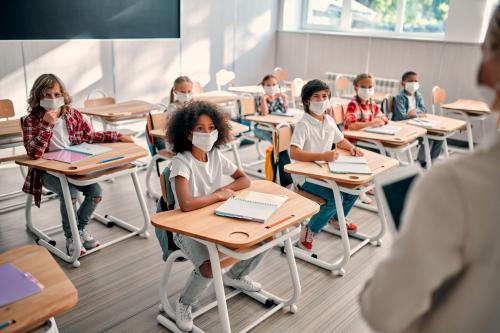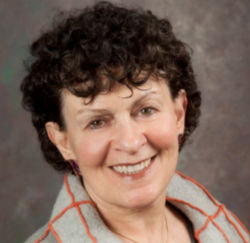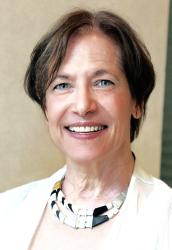While the Biden administration faces many challenges, the future of public education must be a priority. Since 1983, when the National Commission on Excellence in Education wrote “A Nation at Risk,” little has changed with respect to American students’ overall performance on national and international assessments. An intensive focus on reading and math over the past two decades has been ineffective, and at the same time, the American education system is plagued by serious inequities—from classroom practices to school funding. This situation has only been exacerbated by the current pandemic. With a new presidential administration and recovery from the pandemic on the horizon, this is the perfect opportunity to examine how education can change to allow all students to achieve success and become engaged citizens.
On January 13, the Brookings Center for Universal Education (CUE) hosted a virtual event with over 1,000 registered attendees to share our model for 21st century education reform and discuss the educational priorities of researchers, educators, policymakers, and employers.
As detailed in our recent report for the Brookings Policy 2020 series, our model draws on the interdisciplinary science of learning to provide a framework for how and what children learn. How children learn centers on playful learning principles. Children learn best when education is active via an approach that supports inquiry and reflection; engaging; meaningful, so children can connect new information to prior knowledge; socially interactive with adult-facilitated peer collaboration; iterative, with opportunities to form, test, and revise hypotheses; and joyful. What all children need are the “6 Cs” skills: collaboration, as teamwork is demanded in most endeavors; communication, both written and oral; content, including school subjects and “learning to learn” skills like paying attention; critical thinking, evaluating the accuracy and utility of information; creative innovation, solving problems through a synthesis of content knowledge and critical thinking; and confidence taking safe risks and persisting in the face of failure. Schooling around this model respects educators’ expertise, is culturally relevant, and champions equity.
Last month’s Brookings event started an informative conversation about our model and the future of education. Emiliana Vegas, co-director of CUE, moderated a panel discussion with Temple professor and Brookings Senior Fellow Kathy Hirsh-Pasek, education author Ted Dintersmith, business expert Elizabeth Edersheim, and former New Hampshire State Representative Victoria Sullivan.
During the event, we received an influx of audience questions—many of which we were unable to answer. Below we consider the key themes reflected in those questions and respond.
Will playful learning and the 6 Cs work in the classroom? Where and when?
To answer this question, we look to our case study of the Godfrey-Lee Public Schools, a small community school district near Grand Rapids, Michigan with many students from under-resourced communities and Latino students. In the 2018-19 school year, we partnered with district educators in an ongoing collaboration with their kindergarten through second grade classes to implement the 6 Cs approach. The collaboration was prompted by educators’ interest in “rethinking [their] work with a human-centered design process,” according to Carol Lautenbach, a district administrator who led the implementation. The goal was to promote meaningful, joyful, and collaborative learning that generated desired academic outcomes. Many stakeholders shared this vision, including parents, community members, district educators, the board of education, and the teacher’s union.
Working in tandem with educators, we provided evidence-based background information on playful learning and the 6 Cs and offered professional development workshops. However, we deferred to our expert partner educators regarding their instructional methods and the academic content they needed to cover. Teachers selected interdisciplinary thematic instruction as their preferred approach for implementing playful learning and the 6 Cs, in which lessons are connected to a central topic, such as the farmer’s market. Under this theme, first graders in Godfrey-Lee rehearsed and performed “How Does Your Garden Groove?,” a musical populated by entertaining vegetable characters. This entire experience was active, engaging, and meaningful—with room for social interaction and iterative attempts at songs and dialogue. It was surely joyful! Concurrently, the musical promoted all 6 Cs skills. Another activity bridged literacy, math, and music, as students matched the number of syllables in a food’s name (e.g., apple) with the number of beats in a quarter note or eighth note. This activity was active, engaging, meaningful, and joyful with the potential for social interaction and iterative learning. It fostered collaboration, communication, content, and critical thinking. Through these and other activities, the 6 Cs and their underlying playful learning principles became central to Godfrey-Lee’s educational mission.
Beyond Godfrey-Lee, we are engaged in another collaboration to bring playful learning and the 6 Cs into kindergarten classrooms in an affluent Philadelphia suburb. Here, too, thematic learning is the primary instructional approach. Together, these case studies begin to demonstrate the broad applicability of our model. Further research will consider the implementation of playful learning and the 6 Cs at the state level.
Does this model for education reform support children’s socio-emotional learning and content knowledge?
Preliminary results from our Godfrey-Lee case study show our model’s impact. Teacher interviews highlight student engagement and the educators’ own professional development. Student survey data reveal key differences in the classroom environment when built around playful learning and the 6 Cs, and assessment results show significant gains in reading and math skills.
Similar preliminary results from the students in suburban Philadelphia reflect gains in their reading, writing, and math skills. The district’s special education and occupational therapy referrals also declined.
These results are remarkable; yet we take little credit. Effective implementation depends on a strong research-practice partnership, in which educators are the experts and are given the freedom to implement an evidence-based framework consistent with their professional strengths and their students’ backgrounds.
How does the playful learning and 6 Cs approach promote equity?
During a workshop in Grand Rapids, a superintendent called our model the “least discriminatory” approach to education he had seen. By taking students’ backgrounds into consideration—offering meaningful instruction, and valuing children’s different 6 Cs capabilities—promoting equity becomes fundamental. Our model’s adaptability to teachers and students encourages strengths-based pedagogies, namely culturally-responsive teaching. For example, teachers of African-American students, who may have a strong oral storytelling tradition, can transfer the practice into the classroom to support reading skills and other 6 Cs.
How do playful learning and the 6 Cs work outside the classroom, in communities?
This model of education reform forces us to redefine education as a process that includes a breadth of skills across a breadth of ages (e.g., lifelong learning) and a breadth of contexts (e.g., school, apps, and informal education). Since children only spend 20 percent of their waking time in school (a pre-pandemic calculation), we embrace the out-of-school context through Playful Learning Landscapes (PLL)—installations that wed architectural design and the science of learning to create child- and family-friendly places that encourage playful interactions. What’s particularly exciting about this initiative is its deep community focus. The activities themselves promote an engaging multigenerational approach. To develop PLL installations, we bring our framework, but design structures and activities arise from community members. Research on these installations demonstrates that they promote the type of positive interactions that facilitate children’s development.
First steps toward education reform
We are still in the midst of a pandemic that has wreaked havoc on the education system, despite the efforts of heroic teachers. Yet it is a moment of great promise if we can rethink our public education system to ensure it can best serve all students today as they learn to become the citizens of tomorrow. We must continue the conversation that we started last month, and all stakeholders need to be at the table. We owe it to our children.








Commentary
Playful learning and 21st-century skills line the path to education reform: Our responses to your questions
February 17, 2021